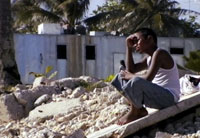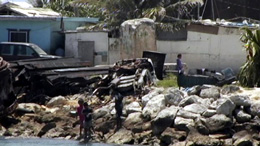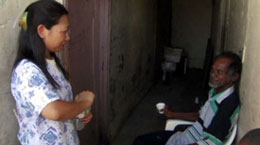

 |

|
  Debating Policy to Improve Population Health This lesson plan uses the health crisis in the Marshall Islands to teach students about the creation of health promotion policy. ARTICLES
 However, about nine million people each year do become sick with the potentially deadly lung ailment, usually because they live in conditions of poverty that compromise their immune systems and undermine their bodies’ ability to fight off the disease. According to Dr. Jim Yong Kim, co-founder of Partners in Health, a leader of world efforts to eliminate TB, “What tuberculosis needs to flourish in a person’s body is a broken down immune system. So just the stress itself of poverty can contribute to the likelihood of developing active tuberculosis… And there’s nothing like malnourishment to decrease the immune response enough to let tuberculosis flourish.” Conversely, improved living conditions can help protect communities against TB. At the turn of the 20th century, tuberculosis was the leading killer in many U.S. cities. But TB rates fell by 70% between 1900 and 1940, before antibiotics to treat the disease were invented. What made the difference?  Living conditions on Ebeye are ideal for the spread of tuberculosis. TB rates on the island are 220 per 100,000 people (compared to 4 per 100,000 in the United States). To successfully cure TB in an individual requires that the patient carefully complete a full course of treatment on schedule, taking up to four different drugs each day for six months. If patients fail to complete their drug regimen, the TB bacillus can mutate and the disease can return in a multiple-drug-resistant form (MDR-TB) – far more dangerous. Every day, public health workers drive the streets of Ebeye tracking their patients to ensure that they complete their course of medications. |
|
|||
|